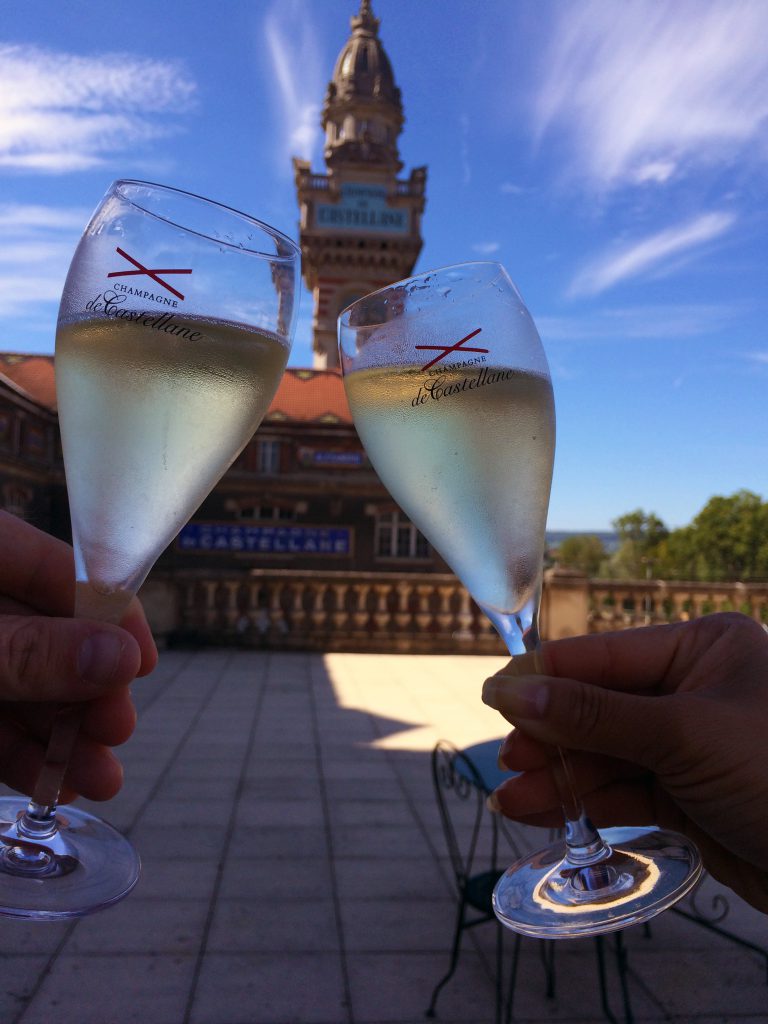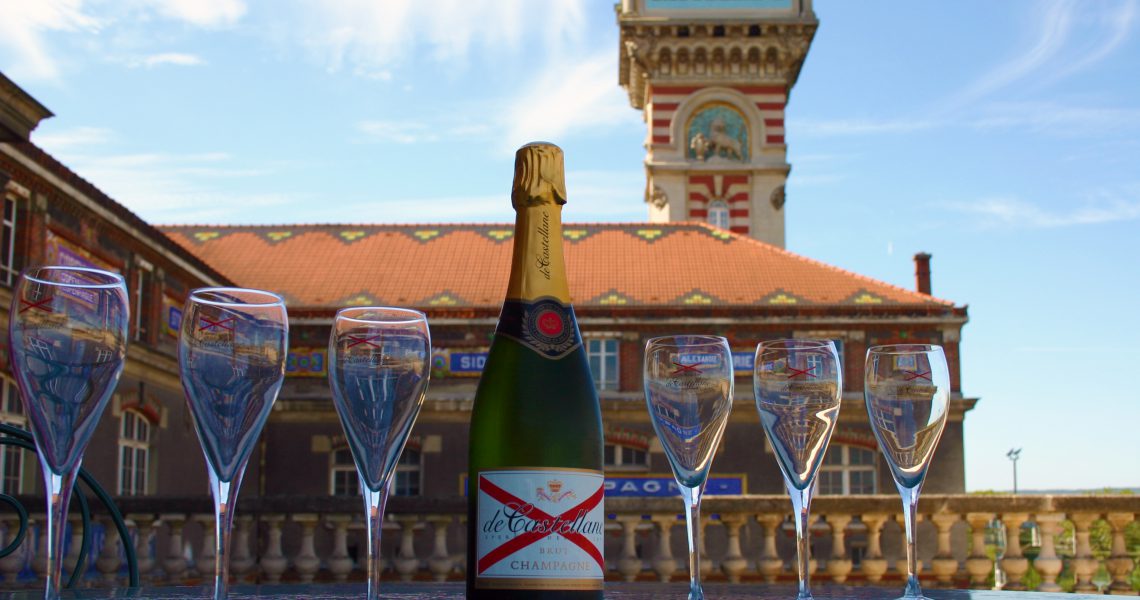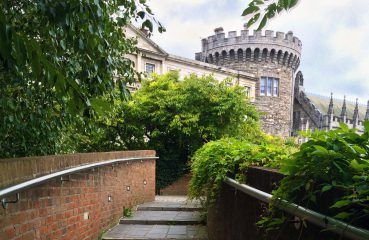During our visit to De Castellane Champagne house our excellent guide Bela gave us some great tips on how to properly choose, drink, and enjoy champagne. Here is a quick recap of her advice along with some tips and knowledge we learnt during our weekend in the Champagne Region.
1: Check it is actual Champagne
Real Champagne must come from the Champagne region in France, the capitol of which is Epernay. The culmination of a perfect climate for grape growing, the chalk cave cellars, the expertise of the region and the closely controlled standards means accidentally picking up a bottle of sparkling wine or Prosecco could leave you very disappointed.
2: Check the bubbles
The bubbles will indicate whether your champagne has been made to a high standard. Not enough bubbles will mean the champagne has not been carbonated properly. If the bubbles are too big, it means the drink may have been kept too warm and is too fizzy. Be careful, big bubbles may mean that the cork may come off before you’re ready for it…
3: Know your Grapes
Champagne is made from 3 grapes: Chardonnay, Pinot Noir, and Pinot Meunier. Each grape will give the champagne a certain flavour and aroma. More Chardonnay will tend to give the champagne a lighter, floral taste, Pinot Noir adds a rich red fruit flavour and Pinot Meunier will often give the drink a fruitier taste. Many champagne bottles will have grape details on the label or you can access them online relatively easily.
De Castellane champagne is roughly one third of each grape, whereas some champagne are 100% chardonnay (known as “blanc de blancs”) and there are some rare varieties that are just Pinot grape based known as “blanc de noirs”.
4: Open it properly – The whistle technique
One thing that we learnt on our trip to Champagne was how much thought and effort went into not wasting or losing any precious champagne in the evolution from grape to glass. Therefore, when in champagne, it is not good etiquette to shake the bottle up and shoot the cork across the garden.
Instead, use the whistle technique. Grip the bottle with one hand and the cork with the other. Twist the two in opposite directions slowly and gently to create a slow release. If done properly there should be a gentle whistle as the cork comes away with no spillage or wastage.
5: Sniff, Swill, Sniff
To get the full aromas and tastes when tasting champagne:
- Take one good sniff of the champagne
- Swirl the glass to release the flavours and aromas
- Take a second sniff
- Taste the champagne.
6: Treat it well
Champagne should be served cold so make sure you hold the glass by the stem to avoid heating the champagne up.
7: Don’t save it for too special an occasion
Champagne is not the same as fine wines in that it does not get better with age – it won’t keep well for a long time. Some vintages will mature slightly in tastes but even vintages should not be kept more than 3 years after they are purchased as the flavour and taste will begin to deteriorate.
8: The World in a Weekend’s advice: Go Vintage!
A vintage champagne is not just an “old” champagne. It is the house’s perfect champagne.
Each year every champagne house will assess their harvest, the quality of the grape and juice. They have and decide whether the harvest is good or exactly right for the house to make its champagne. If it is, they will declare the crop a vintage and give a much longer maturation period to reach perfection.
When in the champagne region and visiting the houses, it’s surprising that for many houses the vintage, whilst made with superior grapes and matured for sometimes 3-4 years, will only cost €2 or €3 more than the normal Brut.
In our extensive research (which at times was very tough) we always found that the vintage was a much superior quality and taste and definitely worth the extra cost.

Of course, we would warmly recommend visiting the Champagne region to conduct your own research. Epernay is the capital of champagne houses and if you are interested in visiting or learning more we’d recommend reading our recounting of our visit to the De Castellane Champagne House in Epernay.
Last modified: 26th August 2020











